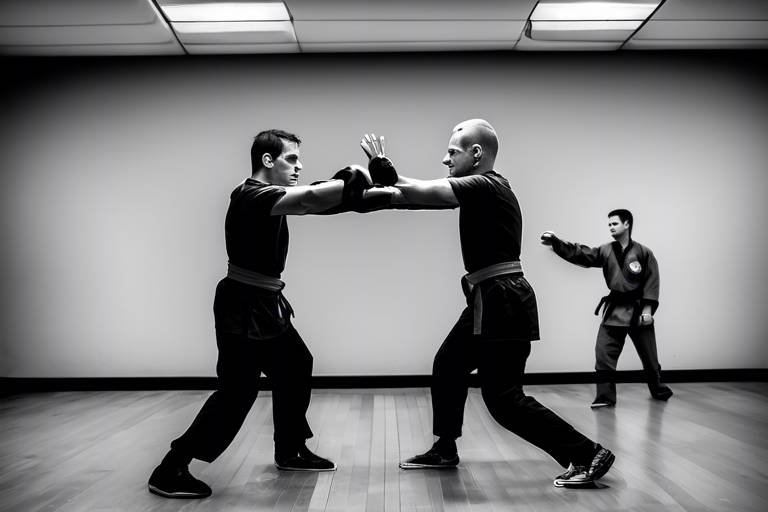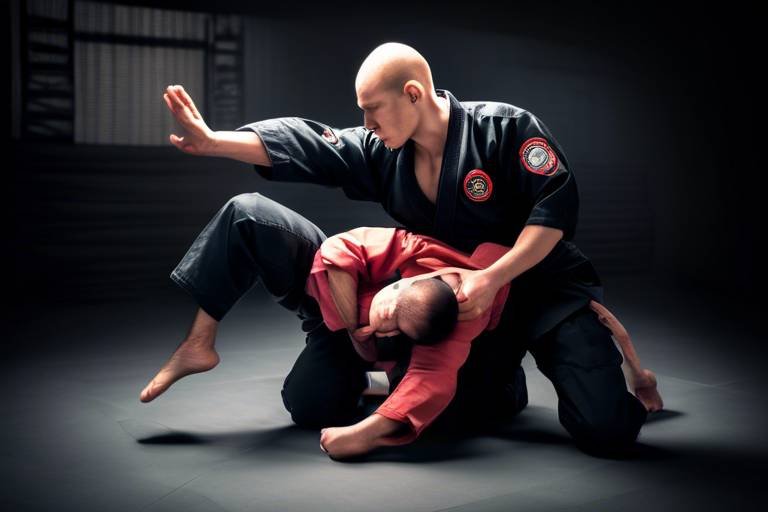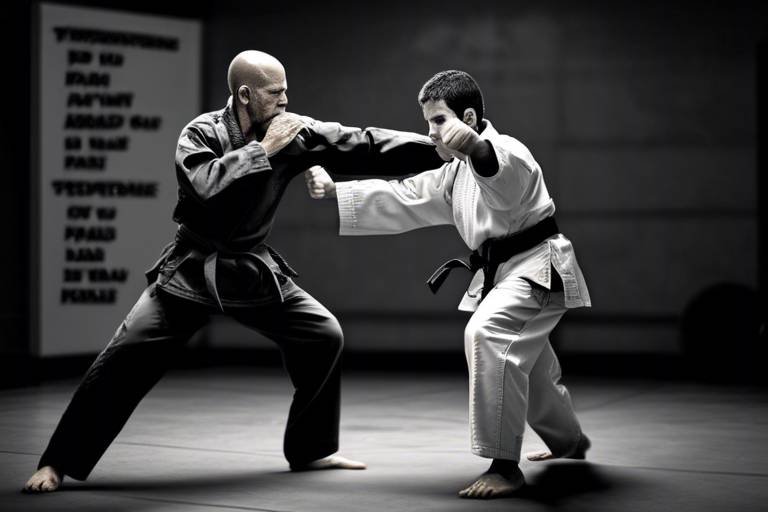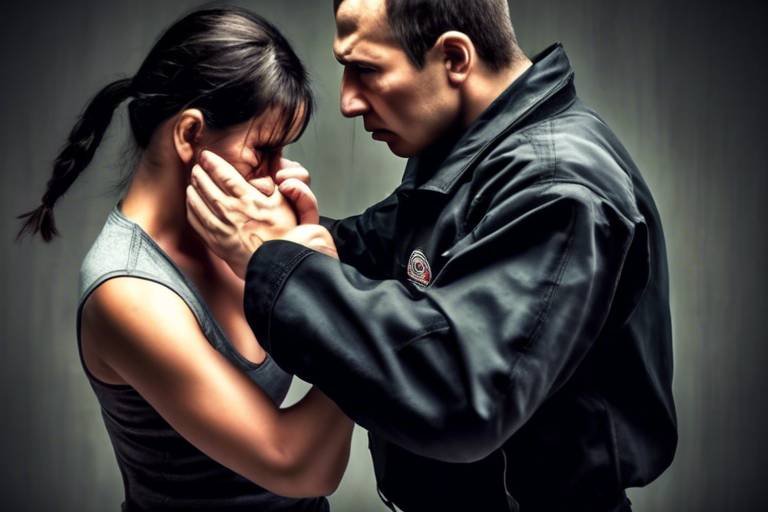The Art of Distancing in Effective Self-Defense Training
In today's world, the importance of self-defense training cannot be overstated. Whether you're walking alone at night, traveling in unfamiliar areas, or simply want to feel more secure in your daily life, understanding the art of distancing can be a game-changer. Distancing is not just about physical space; it's about creating a mental barrier that enhances your ability to react to potential threats. This article dives deep into the crucial role that distancing plays in self-defense training, examining various techniques, strategies, and the psychological aspects that can significantly boost your personal safety and effectiveness in real-life situations.
So, what exactly is distancing in the context of self-defense? At its core, distancing refers to the space between you and a potential threat. Imagine you're in a crowded area, and someone approaches you with an aggressive demeanor. The distance you maintain can be the difference between a peaceful interaction and a dangerous confrontation. Mastering this concept can help you prevent potential threats before they escalate. By understanding how to control the space around you, you can effectively manage encounters and enhance your safety. It's not just about avoiding physical contact; it's about being in a position where you can react swiftly and decisively.
There are several techniques that can be employed to manage distancing effectively. Here are a few methods that self-defense practitioners often utilize:
- Lateral Movement: This involves moving sideways to create space, making it harder for an aggressor to reach you.
- Retreat: Sometimes, the best option is to simply back away from a threat, allowing you to reassess the situation.
- Footwork Drills: Practicing footwork can help you maintain distance while remaining in a defensive stance.
Each of these techniques serves a specific purpose and can be adapted based on the situation at hand. Understanding when and how to use these techniques is crucial for effective self-defense.
When it comes to distancing, there are two primary approaches: active and passive distancing. Active distancing involves making proactive movements to create space between you and a potential aggressor. This might include sidestepping or changing your position to keep a safe distance. On the other hand, passive distancing relies on maintaining a safe distance without making any significant movements. Both methods have their place in self-defense, and knowing when to employ each technique can greatly enhance your safety. For instance, if you sense an immediate threat, active distancing might be your best bet. However, if you're in a crowded area, passive distancing could help you avoid drawing unnecessary attention while still keeping yourself safe.
One of the most critical elements of effective distancing is situational awareness. Being aware of your surroundings allows you to anticipate potential threats before they become a reality. It's like having a sixth sense that alerts you to danger, giving you the opportunity to adjust your distance accordingly. By observing the behavior of people around you, you can identify any suspicious actions and react proactively. This heightened awareness not only helps you maintain a safe distance but also instills confidence, making you less likely to become a target.
Incorporating specific training drills into your regimen can significantly enhance your distancing skills. Here are some effective drills that can help:
- Shadow Sparring: Practice moving and maintaining distance against an imaginary opponent.
- Partner Drills: Work with a partner to practice distancing techniques in a controlled environment.
- Obstacle Course: Set up an obstacle course that requires you to navigate while maintaining distance from various objects.
These drills not only sharpen your skills but also build muscle memory, making it easier to react instinctively in real-life situations.
Understanding the psychological impact of distancing is equally important. Maintaining distance can influence the mindset of both the defender and the aggressor. For the defender, keeping a safe distance can foster a sense of control and confidence. On the flip side, an aggressor may feel intimidated or discouraged when faced with a well-maintained distance. This psychological edge can be a powerful tool in self-defense, as it can deter potential threats before they escalate into physical confrontations.
Applying distancing techniques in real-life scenarios is vital for effective self-defense. Whether you're in a parking lot, at a bar, or even at home, understanding how to manage your space can be a lifesaver. For instance, if someone approaches you aggressively in a parking lot, using lateral movement to create distance can give you the time needed to assess the situation or escape. Similarly, in crowded places, maintaining a safe distance can help you avoid unwanted contact and keep potential threats at bay.
Examining real-life case studies can shed light on the importance of distancing. There have been numerous incidents where effective distancing has played a crucial role in self-defense outcomes. For example, in one case, a woman was able to escape an aggressive encounter by maintaining a safe distance and using her surroundings to her advantage. By keeping her distance and being aware of her environment, she was able to evade the threat without physical confrontation. These examples highlight the practical applications of distancing in everyday life.
Even experienced practitioners can make mistakes with distancing. Some common pitfalls include:
- Failing to maintain awareness of surroundings.
- Underestimating the importance of footwork.
- Being too rigid in movements, making it hard to adapt to changing situations.
To avoid these mistakes, practitioners should continually assess their distancing techniques and remain adaptable in various scenarios. Remember, self-defense is not just about physical strength; it's about strategy, awareness, and, most importantly, the art of distancing.
Q: How can I improve my situational awareness?
A: Practice being mindful of your surroundings. Regularly scan your environment and pay attention to people's behaviors.
Q: What should I do if someone invades my personal space?
A: Use active distancing techniques, such as stepping back or to the side, to create space between you and the aggressor.
Q: Are there specific self-defense classes that focus on distancing?
A: Yes, many self-defense classes incorporate distancing techniques into their training. Look for classes that emphasize situational awareness and practical applications.

Understanding Distancing
When we talk about distancing in self-defense, we’re not just referring to the physical space between you and a potential threat; it’s a complex dance of awareness, strategy, and instinct. Imagine walking through a crowded market. You’re not just moving from point A to point B; you’re constantly assessing the people around you, gauging their intentions, and adjusting your path to maintain a safe bubble. This is the essence of distancing. It’s about creating a buffer zone that can make all the difference in a tense situation.
Mastering this concept is crucial for anyone interested in personal safety. Distancing is not merely about stepping back; it’s about understanding the dynamics of an encounter. The closer someone gets, the more control they can exert over the situation. By maintaining an appropriate distance, you can significantly reduce the risk of an attack and give yourself more time to react. Think of it like playing a game of chess; you need to anticipate your opponent’s moves and position yourself strategically to safeguard your king.
In self-defense training, the significance of distancing can be broken down into several key aspects:
- Prevention of Escalation: Keeping a safe distance can often deter an aggressor from acting, as they may feel less confident when they can’t close the gap.
- Reaction Time: The more space you have, the more time you have to react to an attack. This can be the difference between getting hit or successfully defending yourself.
- Control of the Encounter: By managing the distance, you can dictate the pace of the interaction, making it harder for the aggressor to predict your next move.
But understanding distancing goes beyond just the physical. It’s about developing a keen sense of situational awareness. This means being aware of your surroundings, the people in them, and potential escape routes. It’s like being a hawk, constantly scanning the environment for threats while also being prepared to soar away at a moment's notice. The more aware you are, the better you can judge the distance you need to maintain in various situations.
In summary, understanding distancing is a multifaceted skill that combines physical space management with psychological awareness. It requires practice, patience, and a proactive mindset. As you delve deeper into self-defense training, remember that every inch counts. Your ability to maintain distance could very well be your greatest ally in ensuring your safety.

Types of Distancing Techniques
When it comes to self-defense, understanding and mastering distancing techniques can be the difference between safety and danger. Distancing is not just about physical space; it’s about creating a tactical advantage in a potentially threatening situation. The various techniques for managing distance can be categorized into several key methods, each with its own strategic purpose. Let's dive into some of these techniques.
One of the most fundamental techniques is lateral movement. This involves shifting your position sideways to create space between you and the aggressor. Imagine a chess game where you’re not just moving your pieces forward but also sideways to avoid being captured. By moving laterally, you not only maintain distance but also keep the attacker guessing about your next move. This can be particularly effective in situations where an attacker is closing in; a quick sidestep can create just enough space to escape or prepare for a defensive maneuver.
Another critical technique is the retreat. Retreating isn’t about running away in fear; it’s a strategic withdrawal that allows you to reassess the situation while maintaining a safe distance. Think of it like a tactical retreat in a video game where you pull back to regroup and plan your next move. The goal is to create space that allows you to escape or prepare for an effective counter. It’s essential to practice this technique, as it must be executed calmly and deliberately to avoid panic.
In addition to these, there are also techniques that involve using environmental factors to your advantage. For instance, positioning yourself near obstacles can create barriers between you and the aggressor. This can be anything from a parked car to a street vendor's cart. By utilizing your surroundings, you can enhance your distancing strategy and make it more difficult for the aggressor to reach you.
Moreover, it’s important to recognize the difference between active and passive distancing. Active distancing requires you to take initiative by moving away from the threat or repositioning yourself, while passive distancing means maintaining a safe distance without necessarily changing your location. Knowing when to employ each method is crucial. For example, if an aggressor is approaching aggressively, active distancing may be your best option. Conversely, if you’re in a crowded area and can’t easily move, maintaining passive distance by positioning yourself strategically can be effective.
To further illustrate these techniques, consider the following table summarizing the key types of distancing techniques:
| Technique | Description | When to Use |
|---|---|---|
| Lateral Movement | Shifting sideways to create space. | When an aggressor is closing in. |
| Retreat | Strategic withdrawal to reassess. | When you need to escape or regroup. |
| Environmental Use | Using obstacles to create barriers. | When in crowded or urban settings. |
| Active Distancing | Proactively moving away from danger. | In threatening situations. |
| Passive Distancing | Maintaining distance without moving. | In situations where movement is restricted. |
Mastering these techniques requires practice and awareness. The more familiar you become with these distancing methods, the more instinctive your reactions will be in real-life situations. Remember, the goal of distancing isn’t just to keep space between you and a potential threat; it’s about enhancing your overall self-defense strategy, making you more adaptable and confident in your ability to handle confrontations.

Active vs. Passive Distancing
When it comes to self-defense, understanding the difference between active and passive distancing is crucial for anyone looking to enhance their personal safety. Imagine you're at a party, and suddenly you feel an uncomfortable vibe from someone across the room. This is where the concept of distancing kicks in. Active distancing is all about taking proactive steps to create space between you and a potential threat. This could involve moving away, sidestepping, or even using your environment to your advantage. For instance, if you're cornered, you might pivot to put a table between you and the aggressor, effectively increasing your distance and making it harder for them to reach you.
On the other hand, passive distancing is more about maintaining a safe distance without making any sudden movements. Think of it as being the calm in the storm. You're aware of your surroundings and simply holding your ground, ensuring you’re far enough away to avoid an attack. This technique is particularly useful in situations where making a sudden move might escalate tension. In essence, while active distancing is about movement, passive distancing is about presence.
Both techniques have their place in self-defense, and knowing when to use each can make a significant difference in how effectively you can protect yourself. For example, if you're approached by someone who seems aggressive, employing active distancing might give you the space you need to escape. Conversely, if you find yourself in a crowded area where moving suddenly could cause panic, passive distancing allows you to maintain a safe buffer while observing the situation.
To better understand these concepts, consider the following table that outlines the key differences:
| Aspect | Active Distancing | Passive Distancing |
|---|---|---|
| Definition | Proactive movements to create space | Maintaining a safe distance without sudden movements |
| When to Use | When you need to escape or avoid confrontation | When the situation is tense but you want to avoid escalation |
| Examples | Sidestepping, moving to a safer location | Standing still, keeping a safe buffer zone |
Ultimately, mastering both active and passive distancing techniques can empower you to navigate potentially dangerous situations more effectively. It's about being able to read the room and react accordingly, ensuring you maintain control over your personal space. So next time you find yourself in an uncomfortable situation, remember that your ability to distance yourself—either actively or passively—can be your best line of defense.

Situational Awareness and Distancing
When it comes to self-defense, situational awareness is your best friend. Imagine walking through a crowded market, the vibrant colors and lively chatter surrounding you. While it's easy to get lost in the moment, being aware of your surroundings is crucial for your safety. Situational awareness involves not just seeing what's happening around you, but also understanding the dynamics of the environment, recognizing potential threats, and assessing your options for distancing yourself from danger.
In essence, situational awareness is like having a sixth sense. It allows you to gauge the distance between yourself and others, which is vital in self-defense scenarios. For instance, if you notice someone acting suspiciously or getting too close for comfort, your ability to assess that situation quickly can determine whether you need to take action. By being mindful of your surroundings, you can maintain a safe distance, thereby reducing the likelihood of an encounter escalating into a confrontation.
Now, let’s break this down a bit more. Situational awareness can be categorized into three main components:
- Perception: This is about noticing the details in your environment. Are there people around? What are they doing? Is there an exit nearby?
- Comprehension: This involves understanding the significance of what you perceive. If someone is moving erratically towards you, what does that mean? How should you react?
- Projection: This is about predicting how the situation might evolve. If you maintain your distance, will the person back off, or will they continue to approach?
Mastering these components can significantly enhance your ability to distance yourself from potential threats. For example, if you see someone approaching you too closely, your perception kicks in. You assess the situation and recognize that maintaining a greater distance is necessary. This proactive approach not only protects you but also sends a clear message to the aggressor that you are aware and prepared to defend yourself.
Moreover, situational awareness isn’t just about the immediate threat; it also involves being aware of the overall environment. Are there obstacles that could hinder your escape? Is there a crowd that might help you? By considering these factors, you can make informed decisions about how to navigate the space around you effectively.
Incorporating situational awareness into your self-defense training is essential. Practicing drills that focus on recognizing and responding to various scenarios can sharpen your instincts. For instance, you might engage in role-playing exercises where a partner approaches you unexpectedly, allowing you to practice your distancing techniques in a controlled setting. This not only helps you react quickly but also builds confidence in your ability to manage distance in real-life situations.
In conclusion, situational awareness and distancing go hand in hand. By honing your ability to observe, comprehend, and project, you can effectively manage the space between yourself and potential threats. Remember, being aware of your surroundings can mean the difference between a safe escape and a dangerous encounter. So the next time you step out, keep your eyes open and your distance ready!
- What is situational awareness? Situational awareness is the ability to perceive and understand your environment, including recognizing potential threats and assessing your options.
- How can I improve my situational awareness? You can improve your situational awareness by practicing observation skills, engaging in role-playing scenarios, and being mindful of your surroundings.
- Why is distancing important in self-defense? Distancing is crucial in self-defense as it helps prevent potential threats from escalating and allows you to maintain control over the situation.

Training Drills for Distancing
Training drills for distancing are essential components of effective self-defense. Just like a dancer needs to master their steps before performing on stage, self-defense practitioners must practice their distancing techniques to react instinctively in real-life situations. To get started, consider incorporating various drills that focus on both movement and awareness. These drills not only enhance physical skills but also build confidence, which is crucial during confrontations.
One effective drill is the Shadow Sparring. In this exercise, you simulate a confrontation with an imaginary opponent. Focus on maintaining a safe distance while moving laterally, forward, and backward. This drill helps you understand the space you need to create between yourself and a potential aggressor. Visualize an opponent’s attacks and practice evading them while keeping your distance. It’s like playing a game of chess; you need to anticipate your opponent's moves while planning your own strategy.
Another valuable drill is the Distance Management Drill. Pair up with a partner and practice moving towards and away from each other while maintaining a safe distance. One partner can act as the aggressor, closing in, while the other practices retreating and lateral movements. This drill emphasizes the importance of footwork and situational awareness. It’s crucial to stay aware of your surroundings, as this will help you gauge when to move in or out of range. Remember, distance is your ally; the more you practice, the more natural it will feel.
In addition to these drills, incorporating Pressure Testing can be beneficial. This involves simulating real-life scenarios where you must react under pressure. For instance, during a training session, your instructor might create a scenario where an aggressor approaches you unexpectedly. You’ll need to rely on your distancing techniques to navigate the situation effectively. This is akin to being thrown into the deep end of a pool; it forces you to swim rather than sink.
Finally, consider adding a Situational Awareness Drill to your training. This can be done by walking through a crowded area while paying attention to the people around you. Identify potential threats and practice adjusting your distance accordingly. This not only sharpens your awareness but also reinforces the idea that distancing is not just about physical space but also about being mentally prepared. Think of it as tuning into your surroundings, much like a musician tuning their instrument before a performance.
In summary, training drills for distancing are vital for anyone serious about self-defense. By practicing techniques like Shadow Sparring, Distance Management, Pressure Testing, and Situational Awareness, you can develop the skills needed to maintain safety and effectiveness during confrontations. Remember, practice makes perfect, and the more you train, the more instinctive your responses will become.
- What is the best way to practice distancing techniques?
Engaging in drills like Shadow Sparring and Distance Management with a partner can be very effective. Regular practice helps develop muscle memory. - How can I improve my situational awareness?
Start by observing your surroundings during daily activities. Identify potential threats and practice adjusting your distance accordingly. - Are there any common mistakes to avoid while practicing distancing?
Yes, common mistakes include overcommitting to an attack and failing to maintain awareness of your surroundings. Always prioritize safety and space.
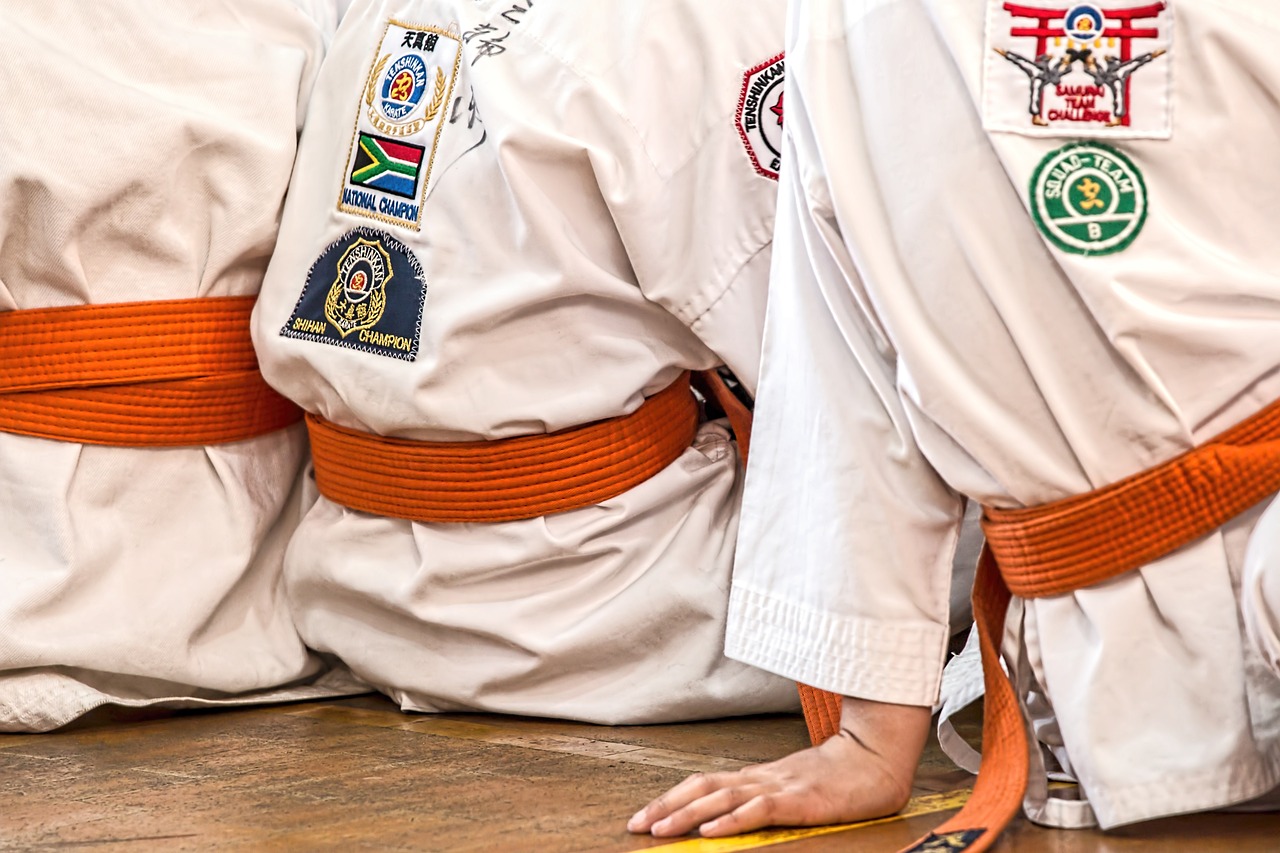
Psychological Aspects of Distancing
When it comes to self-defense, the are just as crucial as the physical techniques. Imagine a scenario where you find yourself in a potentially dangerous situation. The way you perceive space and your ability to manipulate it can significantly affect both your mindset and that of your aggressor. Distancing isn't just about the physical space between you and a threat; it's also about creating a psychological barrier that can deter an attack before it even begins.
One of the key factors in understanding the psychological impact of distancing is the concept of perceived threat. When you maintain an appropriate distance, you not only protect yourself physically but also project confidence and control. This can lead to a decrease in the aggressor's perceived dominance, making them reconsider their actions. For instance, if you stand your ground and keep a safe distance, it sends a clear message: you are not an easy target.
Moreover, maintaining distance can trigger a defensive mechanism in the aggressor's mind. They may feel less empowered to proceed with their intentions if they sense that you are aware and ready to respond. This psychological shift can be a game-changer in a confrontation. It’s like the difference between a lion stalking its prey and a gazelle standing tall, ready to bolt. The gazelle’s awareness and posture can often deter the lion from making a move.
In addition to influencing the aggressor, your own mindset plays a vital role. When you practice distancing techniques, you build a sense of self-efficacy. This is the belief in your ability to handle challenging situations. The more you train to maintain distance effectively, the more confident you become in your ability to protect yourself. This confidence can manifest in various ways, such as improved body language and a more assertive demeanor, which can further deter potential threats.
However, it’s essential to recognize that distancing is not just about physical space; it also involves emotional and mental space. When you create distance, you give yourself the opportunity to assess the situation, think clearly, and make informed decisions. This mental clarity can be the difference between reacting instinctively and responding thoughtfully. In high-pressure situations, the ability to pause and evaluate can lead to better outcomes.
To illustrate the psychological impact of distancing, consider the following table that outlines the key psychological benefits:
| Psychological Benefit | Description |
|---|---|
| Perceived Control | Maintaining distance gives you a sense of control over the situation, reducing feelings of helplessness. |
| Deterrence | A confident stance and appropriate distance can deter aggressors from proceeding with their intentions. |
| Enhanced Awareness | Creating space allows for better situational awareness, enabling you to assess threats more effectively. |
| Improved Decision-Making | Emotional and mental distance provides the clarity needed to make informed decisions in high-pressure scenarios. |
In conclusion, the psychological aspects of distancing in self-defense training cannot be overlooked. It’s not just about keeping physical space; it’s about cultivating a mindset that enhances your safety and effectiveness. By understanding and applying these psychological principles, you can transform your approach to self-defense, making it not only a physical practice but also a mental strategy that prepares you for real-life situations.
- What is the importance of psychological distancing in self-defense? Psychological distancing helps create a barrier that can deter aggressors and empower the defender.
- How can I improve my self-efficacy in self-defense? Regular practice and training in distancing techniques can build confidence and improve your ability to handle confrontations.
- Can distancing techniques be applied in non-violent situations? Yes, distancing can be useful in various social interactions, helping to establish personal boundaries and promote safety.

Real-Life Applications
When it comes to self-defense, understanding the practical applications of distancing techniques can make all the difference between safety and danger. Imagine walking down a dimly lit street at night. You notice someone approaching you, and your heart starts racing. This is where your knowledge of distancing becomes crucial. By effectively managing the space between you and the potential threat, you can create opportunities to escape or prepare to defend yourself, depending on the situation.
In real-life scenarios, distancing can be applied in various contexts, such as:
- Public Spaces: Whether you're in a crowded subway or a bustling mall, being aware of your surroundings and maintaining a safe distance from aggressive individuals can help you avoid confrontation.
- Social Gatherings: Parties and gatherings can sometimes lead to unwanted attention. Knowing how to position yourself and create space can help you feel more secure.
- Work Environments: In situations where conflicts may arise, using distancing techniques can help manage disputes before they escalate.
It's essential to adapt your distancing strategies based on the environment and the behavior of those around you. For instance, if someone is invading your personal space aggressively, taking a step back while maintaining eye contact can send a clear message that you're not an easy target. This assertive body language can deter further aggression and give you the upper hand.
Consider the following table that outlines different scenarios and how to apply distancing techniques effectively:
| Scenario | Recommended Distancing Technique | Outcome |
|---|---|---|
| Approached by an aggressive stranger | Take a step back, maintain eye contact | Establishes boundaries, deters aggression |
| Feeling uncomfortable in a crowd | Shift position to create space | Reduces anxiety, allows for easier exit |
| Conflict at work | Maintain a calm demeanor, step back if needed | De-escalates tension, promotes resolution |
Moreover, situational awareness plays a significant role in applying these techniques effectively. By being alert to your surroundings, you can anticipate potential threats and respond accordingly. It's like playing chess; every move counts, and being one step ahead can change the outcome of the game. For example, if you notice someone following you, your ability to create distance can be your first line of defense. It’s not just about physical distance; it’s also about emotional distance. Keeping a calm and confident demeanor can influence the aggressor's mindset, often making them reconsider their actions.
In conclusion, the real-life applications of distancing in self-defense are vast and varied. By practicing these techniques and being aware of your surroundings, you can enhance your personal safety and confidence in any situation. Remember, self-defense isn't just about physical techniques; it's also about mental preparedness and the ability to read situations effectively.
Q: What is the most effective distancing technique for beginners?
A: For beginners, maintaining a safe distance while being aware of your surroundings is crucial. Practicing simple movements like stepping back or to the side can help create space and avoid potential threats.
Q: How can I improve my situational awareness?
A: Improving situational awareness involves being mindful of your environment. Regularly practice scanning your surroundings, noting exits, and observing people's behaviors to enhance your ability to react quickly.
Q: Can distancing techniques be applied in non-threatening situations?
A: Absolutely! Distancing techniques can be useful in various social settings, helping you maintain personal boundaries and comfort levels during interactions.

Case Studies and Examples
When it comes to self-defense, the importance of distancing cannot be overstated. Real-life scenarios often reveal how effective distancing can be in de-escalating a situation or avoiding confrontation altogether. Let's delve into a few compelling case studies that illustrate the practical application of distancing techniques.
One notable case involved a young woman named Sarah, who was approached by an aggressive individual while walking home late at night. Instead of panicking, she remembered her self-defense training, which emphasized the importance of maintaining distance. Sarah quickly assessed her surroundings and noticed a nearby group of people. By moving towards them while keeping her eyes on the aggressor, she created a safe distance that made the attacker reconsider his approach. This situation highlights how understanding and applying distancing can not only protect oneself but also potentially deter a threat.
Another example is that of a martial arts instructor, John, who faced an escalating confrontation with an irate student. Instead of engaging in a physical altercation, John utilized active distancing techniques. He took a step back, raised his hands in a non-threatening manner, and verbally de-escalated the situation. By creating space, he not only protected himself but also allowed the student to cool down. This case underscores the psychological aspect of distancing, where the mere act of stepping back can shift the dynamics of an encounter.
To further illustrate these points, let's look at a table summarizing key takeaways from these case studies:
| Case Study | Key Technique Used | Outcome |
|---|---|---|
| Sarah's Encounter | Active Distancing | Threat deterred by moving towards a group |
| John's Confrontation | Passive Distancing | De-escalation achieved through space and communication |
These examples clearly show that distancing is not just a physical concept; it’s a multifaceted strategy that incorporates awareness, psychology, and tactics. The ability to create and maintain distance can be the difference between a successful self-defense outcome and a potentially dangerous situation. Whether it's through active movements or maintaining a safe gap, understanding how to effectively use distance is a vital skill in self-defense training.
As we analyze these scenarios, it becomes evident that the effectiveness of distancing techniques can vary based on the situation. What works in one case might not be suitable in another. Therefore, continuous practice and situational awareness are crucial for anyone looking to enhance their self-defense skills. Remember, the goal is not only to protect oneself but also to recognize when to engage and when to retreat, using distance as a powerful tool in your self-defense arsenal.
- What is distancing in self-defense?
Distancing refers to the space maintained between individuals during a confrontation, which can be crucial for personal safety. - How can I practice distancing techniques?
Engage in drills that emphasize lateral movement, retreat, and situational awareness to improve your distancing skills. - What are common mistakes in distancing?
Some common mistakes include getting too close to an aggressor or failing to recognize the need to create space. - Can distancing be effective in non-physical confrontations?
Absolutely! Distancing can also be used to de-escalate verbal confrontations and prevent physical altercations.

Common Mistakes in Distancing
When it comes to self-defense, mastering the art of distancing is crucial, but even seasoned practitioners can stumble into common pitfalls that can compromise their safety. One of the most frequent mistakes is underestimating the importance of distance. Many individuals think they can close the gap quickly or that they can always react in time. This mindset can lead to dangerous situations where an aggressor can close in before you even realize it. Remember, in self-defense, distance is your friend; it's your first line of defense.
Another common error is the tendency to become overly reliant on passive distancing. While maintaining a safe distance is essential, failing to actively create space when necessary can leave you vulnerable. For example, if an aggressor approaches too closely, simply standing your ground may not be enough. Active distancing—which involves moving away or positioning yourself strategically—is vital in these scenarios. It’s like playing chess; you need to anticipate your opponent's moves and adjust your positioning accordingly.
Moreover, many practitioners neglect to consider their environment when practicing distancing techniques. Failing to be aware of your surroundings can lead to a situation where you back yourself into a corner, literally. Imagine trying to maintain distance while standing against a wall; your options become limited, and you may find it challenging to escape. This is why situational awareness plays a significant role in effective distancing. You should always be aware of potential escape routes and obstacles in your vicinity.
Additionally, some individuals mistakenly believe that distancing is solely about physical space. In reality, it's also about psychological distance. If you project confidence and assertiveness, you can often deter an aggressor without needing to engage in physical confrontation. However, if you appear fearful or uncertain, you may inadvertently invite aggression. This psychological aspect of distancing is often overlooked but can be just as crucial as the physical component.
Lastly, one of the most critical mistakes is failing to practice distancing techniques regularly. Like any skill, distancing requires consistent training to become second nature. Without regular drills, you may find yourself reverting to instinctive behaviors that could jeopardize your safety. Incorporating specific drills into your training regimen can help reinforce these skills. For instance, practicing lateral movements or retreating techniques in various scenarios can prepare you for real-life encounters.
To summarize, avoiding these common mistakes can significantly enhance your self-defense capabilities. By understanding the importance of both physical and psychological distancing, being aware of your surroundings, and committing to regular practice, you can improve your effectiveness in self-defense situations. Remember, the goal is not just to defend yourself but to do so in a way that maximizes your safety and minimizes risk.
- What is the most important aspect of distancing in self-defense?
Maintaining an appropriate distance from an aggressor is crucial as it allows you time to react and assess the situation. - How can I improve my situational awareness?
Regularly practice being aware of your surroundings, engage in mindfulness exercises, and participate in self-defense training that emphasizes awareness. - Are there specific drills to enhance distancing skills?
Yes! Drills such as lateral movement practice, retreating exercises, and scenario-based training can significantly improve your distancing techniques. - How does psychological distance affect self-defense?
Projecting confidence can deter aggressors, while appearing fearful may invite aggression. Understanding this can help you maintain a safer distance.
Frequently Asked Questions
- What is distancing in self-defense?
Distancing in self-defense refers to the space between individuals during a confrontation. It's a crucial aspect that can determine the outcome of an encounter, allowing you to evade threats and maintain control over the situation.
- Why is mastering distancing important?
Mastering distancing is essential because it helps prevent potential threats from escalating. By controlling the space between you and an aggressor, you can create opportunities to escape or defend yourself effectively.
- What are some common distancing techniques?
Common distancing techniques include lateral movement, retreating, and using obstacles in your environment to create space. Each technique serves a different purpose and can be adapted based on the situation at hand.
- What is the difference between active and passive distancing?
Active distancing involves proactive movements to increase the space between you and a threat, while passive distancing relies on maintaining a safe distance without engaging in movement. Knowing when to use each can significantly enhance your self-defense strategy.
- How does situational awareness relate to distancing?
Situational awareness is key to effective distancing. By being aware of your surroundings, you can anticipate potential threats and react quickly to maintain a safe distance. It's about reading the environment and the people in it.
- Can you provide examples of training drills for distancing?
Yes! Some effective training drills include practicing lateral movements, shadowboxing while maintaining distance, and role-playing scenarios with a partner to simulate real-life encounters. These drills can build muscle memory and confidence.
- What psychological factors should I consider regarding distancing?
The psychological aspects of distancing can greatly affect both the defender and the aggressor. Maintaining distance can create a sense of control and confidence for the defender, while it may intimidate or confuse the aggressor, potentially diffusing the situation.
- How can I apply distancing techniques in real life?
Applying distancing techniques in real life involves recognizing potential threats and using your knowledge of distancing to navigate those encounters. Whether in public spaces or at home, being aware and prepared can make all the difference.
- What are some common mistakes people make with distancing?
Common mistakes include closing the distance too quickly, failing to maintain situational awareness, and not practicing distancing techniques regularly. Avoiding these pitfalls can significantly improve your self-defense effectiveness.

